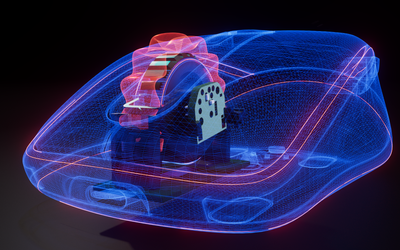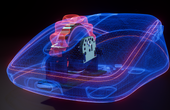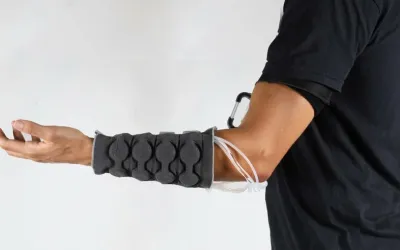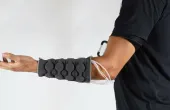Tap keyboard
A wearable device that turns your fingers into a Bluetooth keyboard, capable of typing on any surface and connecting to any device. The device is made of five loops, one for each of your fingers, and slips onto your hand of choice. The loops contain accelerometers that measure the acceleration and sudden stop of your fingers
Technical Specifications
| Hardware | |
| Material | |
| Battery life | |
| Size large | 31 x 33 x 213 |
| Weight large | 50g |
| Size small | 31 x 30 x 211 |
| Weight small | 45 |
| Software | |
| OS Compatibility | |
| Devices | |
Overview
The device is made of five loops, one for each of your fingers, and slips onto your hand of choice. The loops contain accelerometers that measure the acceleration and sudden stop of your fingers.
Tap uses its own alphabet that uses key chords (like a piano) instead of 1 to 1 finger mappings. Letters are grouped logically by commonality. To input with Tap you must memorize simple to learn finger combinations that correspond to your different inputs. In order to detect the different combinations, Tap uses data that comes from 5 accelerometers (one ontop of each finger) to detect acceleration, deceleration and hard stops (among many other parameters)
You can pair Tap with your phone, tablet, or computer, and it just works like any Bluetooth keyboard would. Tap comes with an app called TapGenius, which teaches you this lettering system through a series of repeatable exercises.
Tap also has potential as a method for navigating your way through a virtual reality world, as well as applications in the accessibility field, offering the vision impaired a speedier way of composing messages.
The Tap lasts for 8 hours of use and 7 days standby .
References
Describes the product, has specifications, and discusses the learning system.








